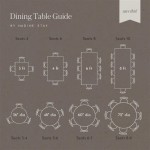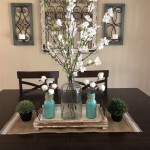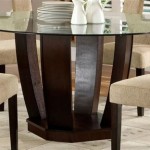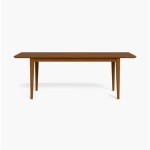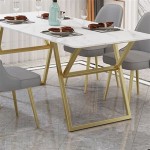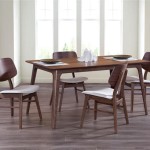Dining Room Ping Pong Table: A Multifunctional Centerpiece
The concept of a dining room ping pong table is gaining traction as homeowners seek to maximize space and integrate recreation into their living environments. This dual-purpose furniture item transforms a traditional dining space into an area for both formal eating and active entertainment. The key to successfully incorporating a ping pong table into a dining room lies in careful planning, size considerations, and aesthetic integration to ensure functionality doesn't sacrifice the room's overall design and atmosphere.
The practicality of a dining room ping pong table extends beyond simply providing a recreational outlet. It fosters social interaction, promotes physical activity, and offers a versatile space adaptable to various needs. During meal times, it serves as a conventional dining table, and when cleared, it instantly converts into a platform for ping pong matches, board games, or even a larger workspace for projects. This adaptability is particularly appealing in smaller homes or apartments where dedicated game rooms or offices are not feasible.
Selecting the right dining room ping pong table requires careful consideration of several factors, including size, materials, design, and storage. These elements collectively determine the table's functionality, durability, and aesthetic compatibility with the existing décor. The goal is to find a table that seamlessly blends into the dining room environment while still providing a regulation-sized playing surface for an enjoyable ping pong experience.
Space and Size Considerations
One of the most crucial aspects of selecting a dining room ping pong table is assessing the available space. Standard ping pong tables measure 9 feet long and 5 feet wide, requiring a significant amount of clearance around the table for comfortable gameplay. A minimum of 5 feet of free space on each side and at each end is generally recommended to allow players to move freely and return shots effectively. This means a total space of approximately 19 feet long and 15 feet wide is ideal for a full-sized ping pong table.
However, not every dining room can accommodate such dimensions. In smaller spaces, consideration should be given to smaller or compact ping pong tables. These tables often come in foldable or sectional designs, allowing them to be easily stored when not in use. While a smaller table may not provide the same level of gameplay as a regulation size table, it still offers a fun and engaging activity without completely dominating the room. Another option is to consider a table tennis conversion top, which can be placed on top of an existing dining table. This provides a temporary ping pong surface without requiring a dedicated ping pong table.
Before purchasing any ping pong table, it is essential to accurately measure the dining room and consider the placement of other furniture. Factors such as doorways, walkways, and other obstructions should be taken into account to ensure that the table can be comfortably used without hindering movement or creating a cluttered environment. Using painter’s tape to mark out the dimensions of the table on the floor can provide a visual representation of the space it will occupy and help in making an informed decision.
Material and Construction Quality
The materials used in the construction of a dining room ping pong table significantly impact its durability, functionality, and aesthetic appeal. The tabletop is the most critical component, as it directly affects the quality of gameplay. High-quality ping pong tables typically feature a thick, solid wood composite tabletop, such as medium-density fiberboard (MDF) or plywood, with a smooth, uniform surface. The thickness of the tabletop is a key indicator of its bounce quality; thicker tabletops generally provide a more consistent and predictable ball bounce.
The frame and legs of the table should be constructed from sturdy materials, such as steel or solid wood, to ensure stability and prevent wobbling during gameplay. Steel frames offer excellent strength and durability, while wooden frames can provide a more aesthetically pleasing appearance. The legs should be equipped with adjustable levelers to compensate for uneven floors and ensure a level playing surface.
The finish of the tabletop is also an important consideration. A matte or semi-gloss finish is preferred to minimize glare and improve visibility. The finish should be durable and resistant to scratches and stains, as the table will be used for both dining and recreational purposes. The paint or coating should also be non-toxic and safe for use in a dining environment. Furthermore, the materials should be easy to clean and maintain to ensure the table remains in good condition for years to come.
Design and Aesthetic Integration
Integrating a ping pong table into a dining room setting requires careful attention to design and aesthetics. The table should complement the existing décor and overall style of the room. The goal is to create a cohesive and visually appealing space where the ping pong table seamlessly blends in, rather than appearing as an out-of-place addition.
When choosing a dining room ping pong table, consider the color and finish of the tabletop and frame. Opt for neutral colors or finishes that coordinate with the existing furniture and wall colors. A wooden frame can add warmth and sophistication to the room, while a steel frame can provide a more modern and industrial look. Some manufacturers offer custom designs and finishes, allowing you to create a truly unique and personalized ping pong table that perfectly matches your dining room’s aesthetic.
The shape of the table can also play a role in its integration into the room. While most ping pong tables are rectangular, some manufacturers offer oval or round tables that can better suit certain dining room layouts. These unconventional shapes can add visual interest and create a more conversational atmosphere. Additionally, consider the legs and base of the table. A sleek, minimalist design can help the table blend in with modern décor, while more ornate or decorative legs can complement a traditional style.
Beyond the table itself, the surrounding accessories should also be carefully chosen to enhance the dining room’s aesthetic. Consider using a stylish net that complements the table's design. Paddles and balls can be stored in an attractive container or displayed on a decorative shelf when not in use. Incorporating artwork or decorative items that reflect both the dining and recreational functions of the room can further enhance the overall ambiance. Ultimately, the key is to create a balanced and harmonious space where the dining room ping pong table is both functional and visually appealing.
Beyond these considerations, the storage aspect of a dining room ping pong table is crucial. Many models are designed with folding mechanisms that allow for compact storage when not in use. This feature is particularly beneficial for smaller dining rooms where space is at a premium. Some tables can be folded in half and rolled away, while others can be completely disassembled for storage in a closet or storage room. The folding mechanism should be easy to operate and secure to prevent accidental unfolding during storage. Additionally, the table should be equipped with wheels or casters for easy maneuverability.

Rs Barcelona You And Me Ping Pong Table 2modern

Ping Pong Table Top Goebel Furniture

Ping Pong Dining Table

You And Me Standard Ping Pong Or Dining Table

Ping Pong Table

Luxury Black Walnut Ping Pong Table Luxewall

Table Tennis Dining Luxury Pool Tables Experts

Rs Barcelona You And Me Indoor Ping Pong Table Walnut With Black Medium

Ping Pong Gaming And Dining Table Bueno Custom Furniture

Plank And Hide Harper Ping Pong Table Robbies Billiards


